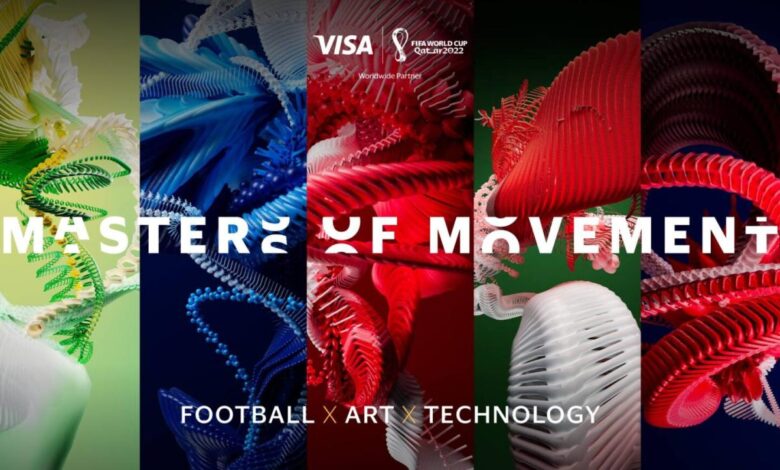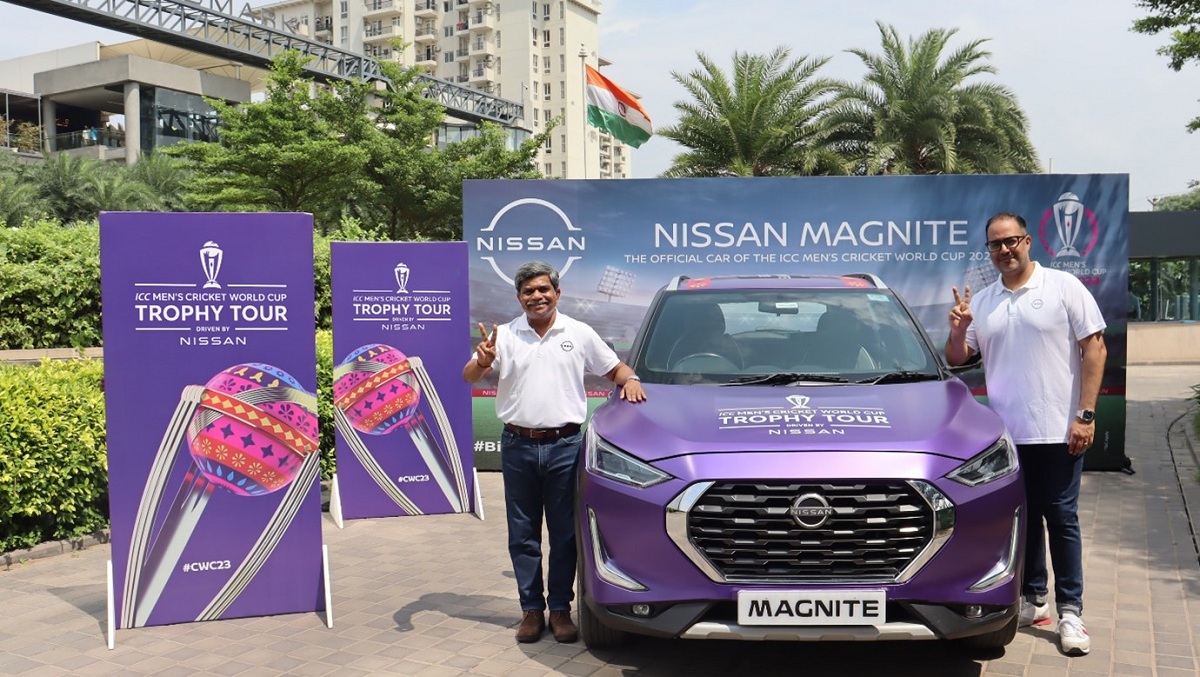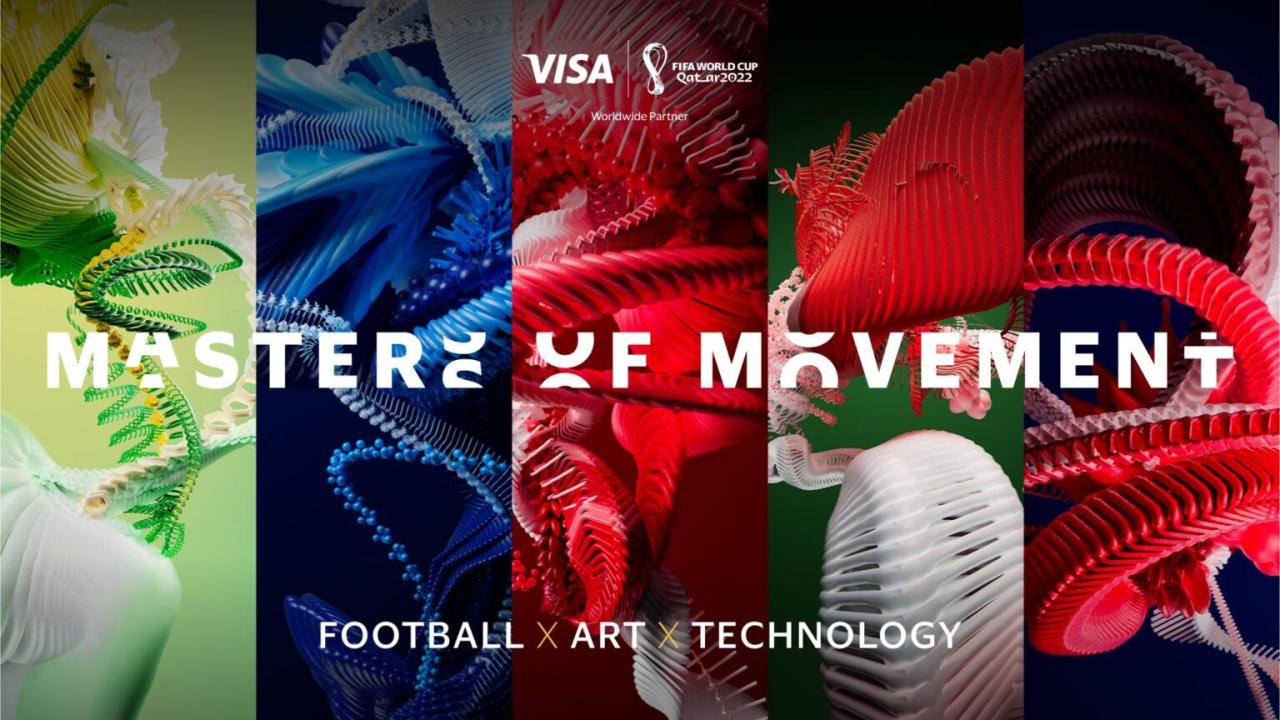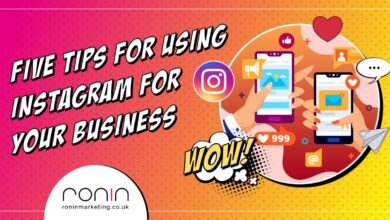
Marketing Goes Viral in World Cup Fever
Marketing Goes Viral in World Cup Fever: The World Cup isn’t just about goals and glory; it’s a global stage for brands to connect with millions of passionate fans. This incredible surge in viewership and engagement presents a unique opportunity for viral marketing campaigns, transforming ordinary ads into unforgettable moments. We’ll explore how brands have successfully leveraged the World Cup’s massive reach, analyzing past successes, current trends, and future possibilities.
Get ready to dive into the exciting world of World Cup marketing!
From iconic commercials to social media sensations, the World Cup has always been fertile ground for memorable marketing. This post will unpack the strategies behind successful campaigns, highlighting the role of social media, fan engagement, and navigating cultural nuances across a global audience. We’ll also examine the ethical considerations involved and provide actionable insights for brands aiming to make their mark during the next World Cup.
World Cup Marketing Trends
The FIFA World Cup is a global phenomenon, attracting billions of viewers and offering unparalleled opportunities for brands to connect with a massive and highly engaged audience. Marketing strategies surrounding the event have evolved dramatically over the years, reflecting changes in technology, consumer behavior, and the overall media landscape. This evolution has led to increasingly creative and impactful campaigns, pushing the boundaries of advertising and sponsorship.
Evolution of World Cup Marketing Strategies
Early World Cup marketing efforts focused primarily on traditional media like television commercials and print advertising. Sponsorships were largely about securing prominent logo placement and associating the brand with the prestige of the event. As the internet and social media gained traction, marketing strategies became more sophisticated, incorporating digital platforms and interactive campaigns to engage fans in new ways.
More recently, a focus on data-driven marketing, personalized experiences, and leveraging influencer marketing has become increasingly prominent. The shift from a primarily broadcast-centric approach to a multi-platform, digitally-integrated strategy is a defining characteristic of modern World Cup marketing.
Innovative Marketing Campaigns
Three innovative marketing campaigns stand out for their impact and creativity. First, Nike’s “Write the Future” campaign during the 2010 World Cup utilized compelling storytelling and visual effects to create an emotional connection with viewers. The ads showcased potential outcomes of matches, dramatically illustrating the impact of individual players and the intense competition. The campaign’s success stemmed from its ability to tap into the emotional investment fans have in the game, creating a memorable and engaging experience.Second, Coca-Cola’s consistent focus on global unity and shared experiences throughout numerous World Cups has built a powerful brand association with the event.
Their campaigns often feature diverse individuals coming together to celebrate football, reinforcing their brand message of inclusivity and happiness. The long-term commitment and consistent messaging have cemented Coca-Cola’s position as a quintessential World Cup sponsor.Third, Adidas’s use of interactive digital experiences, particularly through their online platforms and mobile apps, has significantly boosted fan engagement. They’ve offered virtual games, prediction contests, and exclusive content to create a sense of community and reward loyal fans.
This digital-first approach has allowed Adidas to connect with a younger demographic and build stronger brand loyalty.
Traditional vs. Digital Marketing Approaches
Traditional marketing, encompassing television commercials, print ads, and stadium signage, still holds significant value during the World Cup, particularly in reaching a broader audience and creating strong brand visibility. However, digital marketing, encompassing social media campaigns, targeted online advertising, influencer marketing, and interactive digital experiences, offers greater precision, engagement, and measurability. The most successful World Cup marketing strategies today effectively integrate both approaches, leveraging the broad reach of traditional media while capitalizing on the targeted engagement and data-driven insights of digital platforms.
A blended approach allows for a holistic campaign that maximizes impact across different demographics and platforms.
Successful World Cup Sponsorships and Marketing Tactics
| Sponsor | Marketing Tactic | Impact | Example |
|---|---|---|---|
| Coca-Cola | Global unity messaging, experiential marketing | Strong brand association with the event, increased global recognition | “Open Happiness” campaign, featuring diverse individuals celebrating football |
| Adidas | Interactive digital experiences, influencer marketing, product placement | Increased brand awareness, engagement with younger demographics, enhanced product sales | Virtual games, partnerships with football stars, supplying kits to national teams |
| Visa | Cashless payment promotion, sponsorships of events | Increased adoption of Visa payment systems, enhanced brand visibility | Payment systems integrated into stadiums and fan zones, sponsorships of events and activities |
| Budweiser | Emotional storytelling, sponsorships of fan events | Strong brand association with the event, increased sales during the tournament | Commercials highlighting the passion and excitement of football fans, sponsorships of official events |
Viral Marketing During the World Cup
The World Cup is a global phenomenon, a month-long spectacle that unites billions. This massive audience presents an unparalleled opportunity for brands to connect with consumers on a deeply emotional level. Successful viral marketing during the World Cup capitalizes on this shared experience, tapping into the excitement, national pride, and collective passion surrounding the games. Clever campaigns that resonate with this atmosphere have the potential to achieve phenomenal reach and lasting brand impact.Successful World Cup marketing campaigns often leverage the event’s inherent virality, creating content that is easily shared and discussed across various platforms.
World Cup fever is driving insane marketing opportunities right now! Brands are seeing huge engagement, and to really capitalize, you need a strong video strategy. That’s where understanding how to leverage YouTube comes in – check out this guide on getting it on with YouTube to learn how to maximize your reach. Smart use of YouTube during this viral marketing moment could be the difference between a campaign that fizzles and one that truly explodes.
This isn’t just about showing ads; it’s about becoming part of the conversation.
Examples of Viral World Cup Marketing Campaigns
Several past World Cups have seen memorable marketing campaigns that achieved viral status. For example, Nike’s “Write the Future” campaign from the 2010 World Cup featured a series of short films depicting alternative realities based on the outcomes of key matches. The dramatic storytelling and star power combined to create a powerful and widely shared campaign. Similarly, Coca-Cola’s consistent focus on global unity and shared joy throughout various World Cups has resulted in consistently popular campaigns that often trend organically due to their positive messaging and association with the unifying spirit of the event.
These campaigns weren’t just advertisements; they were engaging narratives that tapped into the emotional core of the World Cup experience.
Factors Contributing to Viral Marketing Success During the World Cup
Several key factors contribute to a marketing campaign’s virality during the World Cup. First, emotional resonance is crucial. Campaigns that tap into feelings of national pride, excitement, or shared joy are far more likely to be shared. Second, timeliness is essential. Campaigns need to be relevant to the current matches and the overall atmosphere of the tournament.
Third, high-quality production is important. A poorly produced video or ad is unlikely to go viral, regardless of its message. Finally, strategic seeding on relevant social media platforms can significantly amplify the reach of a campaign. This involves working with influencers and engaging directly with fans to spark conversations and encourage sharing.
The Role of Social Media in Amplifying World Cup Marketing Campaigns
Social media platforms play a pivotal role in amplifying World Cup marketing campaigns. Platforms like Twitter, Instagram, and TikTok become hubs of real-time discussion and engagement during the tournament. Brands can leverage these platforms to create interactive content, respond to fan comments, and run contests to further boost engagement. The immediacy and reach of social media enable campaigns to spread rapidly, organically, and across international borders.
The use of relevant hashtags and trending topics is critical in ensuring visibility within the larger World Cup conversation. Real-time responses to events within the games themselves can also create highly shareable content.
Hypothetical Viral Marketing Campaign for a Fictional Brand
Let’s imagine a fictional sportswear brand, “Apex Athletics,” launching a campaign during the next World Cup. Their campaign, titled “Apex Moments,” would feature a series of short, visually stunning videos showcasing everyday people celebrating their own personal victories, mirroring the triumph and passion seen on the World Cup field. Each video would culminate with the individual wearing Apex Athletics apparel, subtly associating the brand with moments of personal achievement.
The campaign would utilize a dedicated hashtag (#ApexMoments) and encourage user-generated content by asking fans to share their own “Apex Moments” videos. This campaign would leverage the emotional resonance of personal achievement, mirror the competitive spirit of the World Cup, and use social media to foster a sense of community and brand loyalty. It would rely on high-quality video production and strategic influencer partnerships to maximize its viral potential.
Furthermore, real-time engagement, responding to key game moments with short, themed videos, would maintain a constant level of engagement throughout the tournament.
Leveraging Fan Engagement

Source: themileage.in
The World Cup is a global phenomenon, offering brands a unique opportunity to connect with millions of passionate fans. However, simply plastering your logo onto World Cup-related content isn’t enough. Authentic engagement is key to building brand loyalty and achieving meaningful results. This requires understanding the nuances of fan sentiment, leveraging relevant content, and participating in the conversation in a genuine and respectful manner.Successful engagement strategies go beyond simple advertising; they foster a sense of community and shared experience around the tournament.
By creating interactive experiences and fostering genuine connections with fans, brands can transform themselves from mere spectators into active participants in the World Cup narrative. This approach not only boosts brand visibility but also strengthens brand affinity and encourages organic sharing.
Authentic Engagement on Social Media
Brands can authentically engage with World Cup fans on social media by participating in relevant conversations, responding to comments and questions promptly, and creating content that resonates with the shared passion for football. This includes sharing behind-the-scenes content, showcasing fan-created content, and running polls and quizzes related to the tournament. Crucially, authenticity means avoiding overly promotional content and focusing instead on providing value and entertainment to the audience.
Brands should listen more than they speak, using social listening tools to understand what fans are saying and tailoring their responses accordingly. This approach fosters a two-way dialogue, building trust and strengthening the brand-consumer relationship.
Examples of Successful Interactive Marketing Campaigns
Several brands have successfully engaged World Cup audiences through interactive campaigns. For example, a hypothetical campaign by a sportswear brand could involve a prediction contest where fans guess match results for a chance to win prizes. This creates excitement and encourages interaction. Another example could be a social media filter allowing fans to overlay themselves with national team colors or celebratory graphics.
This fosters a sense of shared identity and provides fans with engaging content to share with their networks. A further example is a campaign that incorporates user-generated content, such as fan-made videos or photos, showcasing their passion for the game. By highlighting user contributions, the brand demonstrates an appreciation for its audience while simultaneously generating engaging content.
These examples show how brands can use interactive elements to build excitement, participation, and positive brand associations.
Strategies for Creating Shareable World Cup Content, Marketing goes viral in world cup fever
Creating shareable content hinges on understanding what resonates with World Cup fans. This often involves humor, emotion, and relatability. Content should be visually appealing, easy to consume, and ideally, incorporates a call to action, encouraging fans to share their experiences and opinions. For example, short, engaging videos showcasing funny moments or heartwarming stories from the World Cup are likely to go viral.
Similarly, visually stunning graphics or images that capture the excitement of the tournament can generate significant social media engagement. The key is to create content that evokes a strong emotional response, prompting fans to share their experiences with their network. Using relevant hashtags and encouraging user-generated content also significantly increases the likelihood of content going viral.
Five Engagement Strategies for Various Social Media Platforms
Successful engagement requires a tailored approach for each platform.
- Instagram: Run a photo contest encouraging fans to share their World Cup viewing parties using a branded hashtag. This leverages Instagram’s visual focus and encourages user-generated content.
- Twitter: Participate in real-time conversations around matches, using relevant hashtags and responding to fan comments and questions. This builds brand awareness and demonstrates responsiveness.
- Facebook: Create a Facebook group for fans to discuss the World Cup, fostering a sense of community and allowing for direct engagement.
- TikTok: Create short, engaging videos using trending sounds and challenges related to the World Cup. This taps into the platform’s popular format and increases visibility.
- YouTube: Publish behind-the-scenes content, interviews with football personalities, or highlight reels of exciting match moments. This provides valuable content that keeps fans engaged and informed.
Impact of Global Reach: Marketing Goes Viral In World Cup Fever
The World Cup’s global reach presents a unique challenge and opportunity for marketers. Reaching a truly global audience requires navigating diverse cultural landscapes, linguistic differences, and varying consumer behaviors. Successfully capitalizing on this massive audience requires a nuanced understanding of these factors and a highly adaptable marketing strategy.The sheer scale of the World Cup’s viewership necessitates a sophisticated approach.
While the potential for brand visibility is enormous, failing to account for cultural sensitivities can lead to significant miscalculations and even brand damage. This necessitates a strategy that is both centralized in its core messaging but also highly localized in its execution.
Marketing Strategies Across Regions
Effective marketing strategies during the World Cup vary significantly depending on the region. For instance, a campaign relying heavily on social media engagement might resonate strongly in North America and Europe, where social media penetration is high. However, in regions with lower internet access or different preferred platforms, a different approach might be necessary, perhaps focusing on traditional media or community-based initiatives.
A successful campaign will leverage a multi-channel strategy, adapting its approach to the specific characteristics of each target market. For example, a campaign focused on the vibrant street football culture in South America might feature local influencers and community events, whereas a campaign in East Asia might focus on partnerships with major broadcasters and online streaming platforms.
Cultural Nuances in World Cup Marketing
Brands must be acutely aware of cultural nuances when marketing during the World Cup. Humor, for instance, can be highly subjective and what might be considered funny in one culture could be offensive in another. Similarly, colors and symbols hold different meanings across cultures. A color associated with good luck in one region might be associated with mourning in another.
Consider the case of a brand using a specific animal imagery in their campaign; in some cultures, that animal might be revered, while in others, it could be considered unlucky or even taboo. Careful research and consultation with local experts are crucial to avoid such pitfalls.
Adapting Marketing Messages for Cultural Contexts
Adapting marketing messages requires more than just translation. It involves understanding the underlying values, beliefs, and preferences of the target audience. A simple translation of a slogan might not convey the intended meaning or emotional impact. For example, a campaign promoting teamwork might emphasize individual achievement in a more individualistic culture, while in a collectivist culture, the focus might be on group harmony and collaboration.
This requires a deep understanding of cultural context and the ability to tailor messaging to resonate with the local audience’s values. Consider a hypothetical scenario where a sports drink company is launching a campaign. In a region where family is highly valued, the campaign might emphasize shared experiences and family bonding, while in a region that values individual achievement, the campaign might focus on individual performance and success.
This tailored approach ensures the message is not only understood but also resonates emotionally with the audience.
Measuring Campaign Success
So, your World Cup marketing campaign is over. The confetti has settled, the vuvuzelas are silent (mostly!), and now comes the crucial part: figuring out what worked and what didn’t. Measuring the success of a World Cup campaign isn’t just about counting likes; it’s about understanding the return on your investment and how effectively you connected with your target audience during this high-stakes global event.
Let’s dive into the metrics that truly matter.Measuring the success of a World Cup marketing campaign requires a multi-faceted approach, going beyond simple vanity metrics like likes and shares. We need to analyze data that reflects real engagement and ultimately, business outcomes. This involves tracking key performance indicators (KPIs) across different platforms and channels, and then correlating them with marketing spend to assess ROI.
Key Performance Indicators (KPIs) for World Cup Marketing
The KPIs you choose will depend on your specific campaign goals. However, some universally relevant metrics include website traffic, conversion rates, brand mentions, social media engagement, and reach. For example, a campaign aiming to increase brand awareness might prioritize reach and brand mentions, while a campaign focused on driving sales would focus on conversion rates and website traffic originating from World Cup-related activities.
Let’s look at some examples.
- Website Traffic: Track the number of visitors to your website from World Cup-related sources (e.g., social media ads, sponsored content). Analyze which sources drove the most traffic and which pages were most popular.
- Conversion Rates: Measure the percentage of website visitors who completed a desired action, such as making a purchase, signing up for a newsletter, or requesting a quote. This directly reflects the effectiveness of your campaign in driving sales or leads.
- Brand Mentions: Monitor the number of times your brand is mentioned on social media, news websites, and blogs. Positive sentiment analysis can reveal the overall public perception of your campaign.
- Social Media Engagement: Track metrics such as likes, shares, comments, and retweets on your social media posts. High engagement suggests a successful connection with your target audience.
- Reach: This measures the total number of unique individuals exposed to your campaign across all channels. A wider reach indicates greater brand visibility during the World Cup.
Tracking Social Media Campaign Impact
Social listening tools and analytics dashboards provided by platforms like Facebook, Twitter, and Instagram are invaluable for tracking social media campaign impact. These tools allow you to monitor brand mentions, sentiment analysis, and engagement metrics in real-time. Analyzing hashtag performance, tracking mentions of your campaign’s unique identifiers, and monitoring the conversations surrounding your brand are all crucial for understanding how your social media efforts resonated with the audience.
For instance, you can track the reach of specific posts, identify influential users who shared your content, and measure the overall sentiment expressed towards your brand. By combining these data points, you can gauge the success of your social media campaign and identify areas for improvement.
Marketing Spend vs. Campaign Reach
Imagine a graph with “Marketing Spend” on the x-axis and “Campaign Reach” on the y-axis. Ideally, you’d see a positive correlation: as marketing spend increases, campaign reach also increases. However, the relationship isn’t always linear. Initially, a modest increase in spending might yield a significant rise in reach, demonstrating economies of scale. But as you continue to increase spending, the incremental gain in reach might diminish.
This could be due to market saturation or diminishing returns from certain advertising channels. The graph would visually represent this – a steep initial incline, gradually flattening as spending increases further. A well-executed campaign should show a strong positive correlation, but careful analysis is needed to identify the point of diminishing returns and optimize spending accordingly. For example, a hypothetical scenario could show a $10,000 investment yielding a reach of 1 million people, while a $50,000 investment might only reach 2 million – illustrating the diminishing returns at higher spending levels.
This visual representation helps to optimize budget allocation and maximize ROI.
Ethical Considerations
The World Cup, a global spectacle watched by billions, presents a unique ethical landscape for marketers. The immense reach and passionate engagement of fans create opportunities for impactful campaigns, but also significant potential for exploitation and misrepresentation. Navigating this requires a keen awareness of responsible marketing practices and a commitment to upholding ethical standards. Failure to do so can lead to reputational damage, consumer backlash, and even legal repercussions.The pressure to capitalize on the World Cup’s popularity can tempt brands to cut corners, leading to ethical dilemmas.
This section explores these concerns, offering guidance for creating campaigns that are both effective and responsible.
Irresponsible and Misleading Marketing Practices
Examples of unethical marketing during past World Cups include using misleading imagery or statistics to exaggerate a product’s association with the event. Some brands have leveraged the nationalistic fervor surrounding the tournament to promote products in a way that felt exploitative or insensitive. For instance, a hypothetical scenario could involve a company using imagery strongly suggestive of national pride to sell a product completely unrelated to the sport or the country’s culture, creating a false connection in the minds of consumers.
Another example could be a brand inflating its sponsorship level to appear more prominently associated with the event than it actually is. This kind of “ambush marketing,” where a non-sponsor attempts to capitalize on the event’s popularity without paying for official rights, can be seen as deceptive. Furthermore, the use of child labor in the production of merchandise related to the World Cup has been a recurring ethical concern, highlighting the importance of supply chain transparency.
Authenticity and Transparency in World Cup Marketing
Authenticity and transparency are paramount in building trust with consumers during the World Cup. Consumers are more discerning than ever, and they can quickly detect inauthentic or misleading marketing efforts. A campaign built on genuine connections with fans, reflecting the spirit of the game and respecting the cultural context, will resonate far more effectively than a cynical attempt to simply leverage the event’s popularity.
Transparency in sponsorships and partnerships, clearly stating the nature of the relationship between the brand and the event, is crucial in building consumer trust. This also includes being upfront about the manufacturing processes and ethical sourcing of merchandise. Open communication and honest representation foster positive brand perception and long-term customer loyalty.
Guidelines for Ethical and Responsible World Cup Marketing
Prioritize authenticity and build genuine connections with fans, reflecting the spirit of the game and respecting cultural diversity.
Ensure all marketing materials are accurate and truthful, avoiding misleading claims or exaggerated associations with the World Cup.
Respect intellectual property rights and avoid any form of ambush marketing or unauthorized use of World Cup imagery.
Maintain high ethical standards throughout the entire supply chain, ensuring fair labor practices and sustainable production methods.
Be transparent about sponsorships and partnerships, clearly stating the nature of the relationship with the event.
Engage in responsible advertising practices, avoiding the exploitation of vulnerable groups or the promotion of harmful products.
Monitor social media and actively respond to any concerns or criticisms raised by consumers.
Conduct thorough due diligence to ensure all marketing activities comply with relevant laws and regulations.
Concluding Remarks

Source: translationroyale.com
So, the next time the World Cup rolls around, remember the power of strategic, engaging, and ethical marketing. It’s not just about splashing your logo across the screen; it’s about crafting a story that resonates with the global community of football fans. By understanding the trends, leveraging social media effectively, and respecting cultural sensitivities, brands can create campaigns that not only go viral but also leave a lasting positive impression.
The World Cup fever is a powerful force – let’s harness it responsibly and creatively!
User Queries
What are some common mistakes brands make during World Cup marketing?
Common mistakes include ignoring cultural nuances, creating insensitive campaigns, focusing solely on sales rather than engagement, and failing to track and measure campaign performance.
How can small businesses participate in World Cup marketing effectively?
Small businesses can leverage cost-effective strategies like social media contests, influencer collaborations, and targeted online advertising to reach a niche audience.
What’s the role of influencer marketing during the World Cup?
Influencer marketing plays a significant role, allowing brands to reach specific demographics and leverage the credibility and reach of passionate football fans with large followings.
How can brands measure the ROI of their World Cup marketing campaigns?
Brands should track metrics like website traffic, social media engagement, brand mentions, sales conversions, and overall brand awareness to assess the return on their investment.



